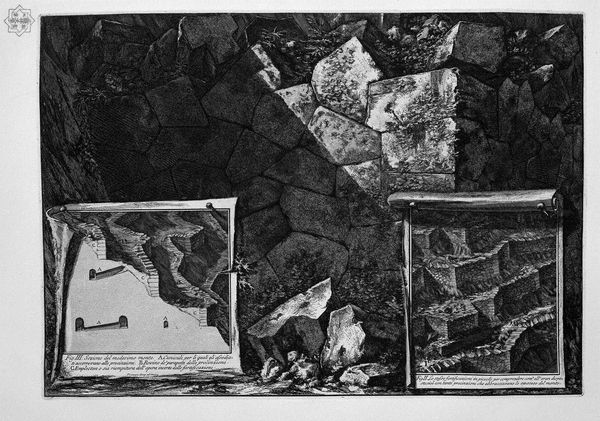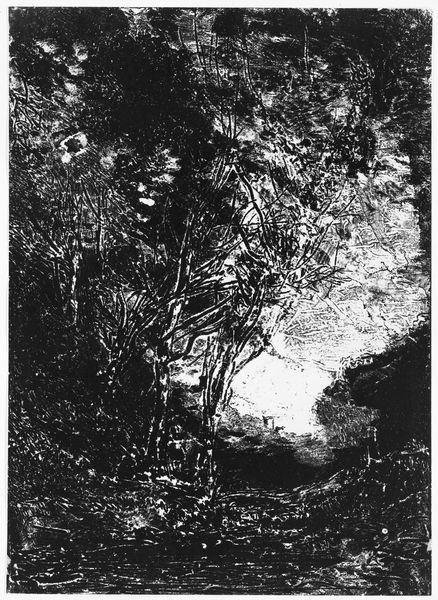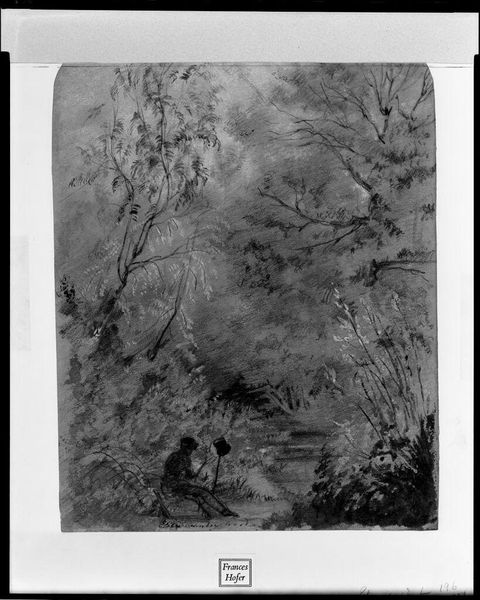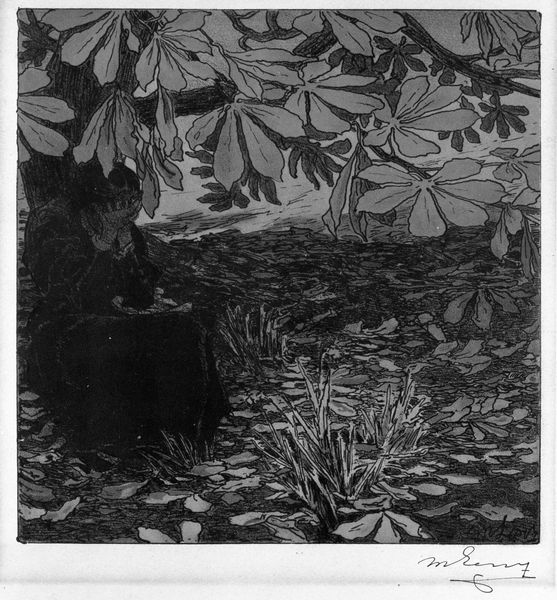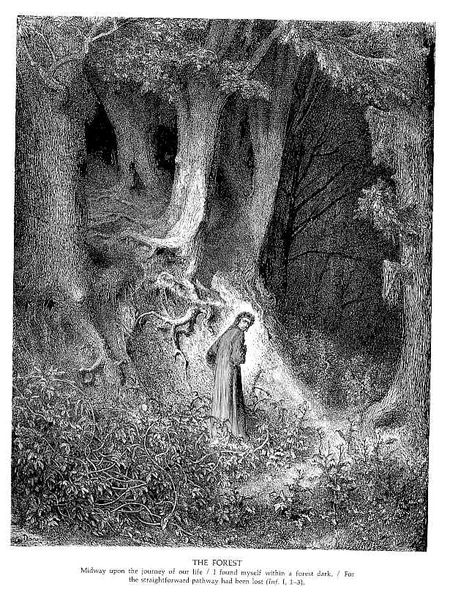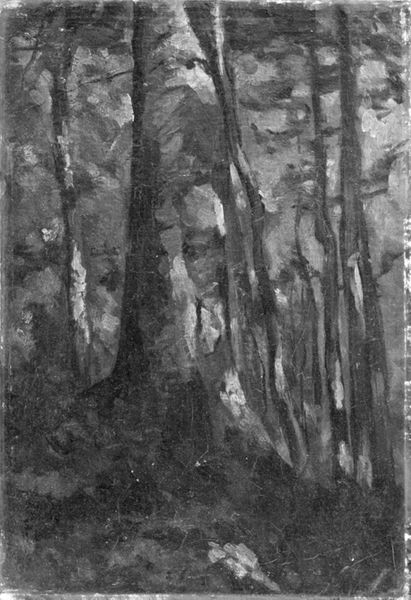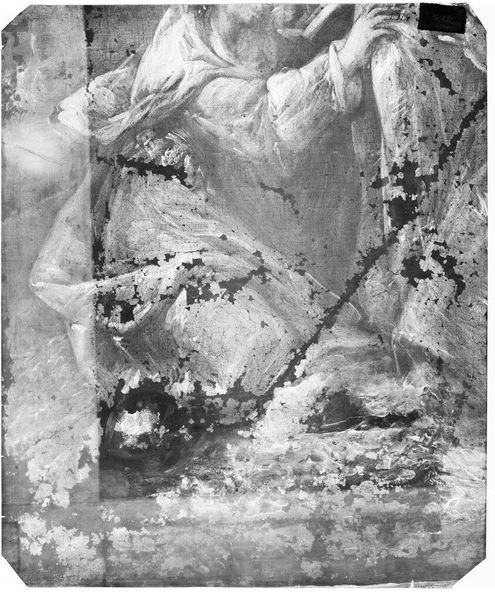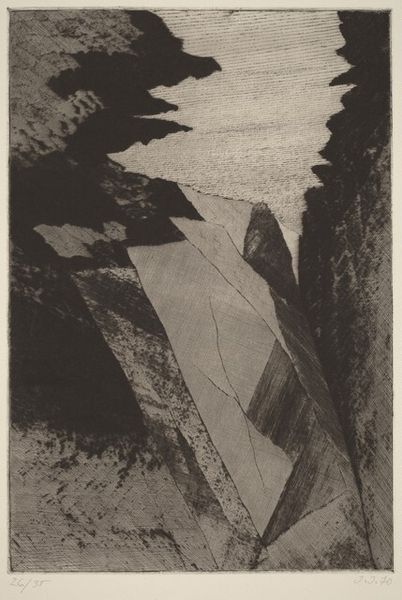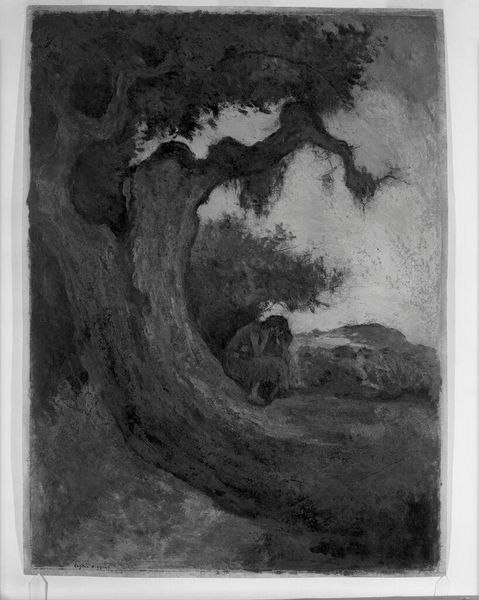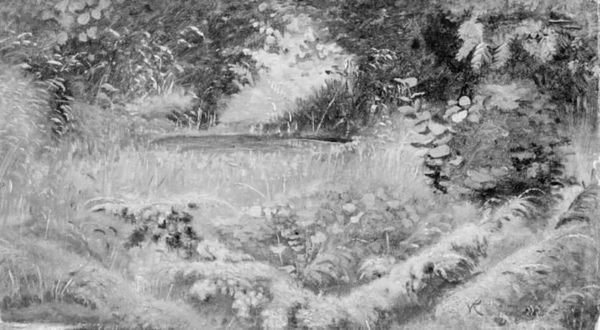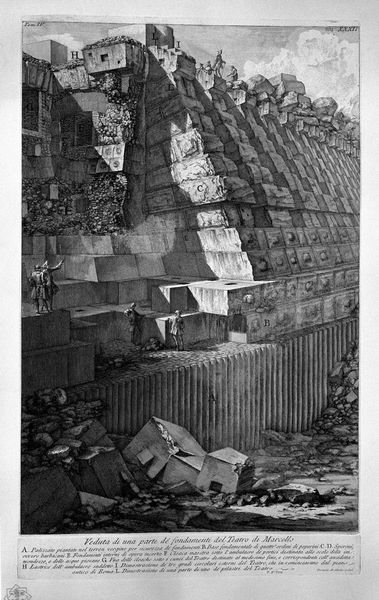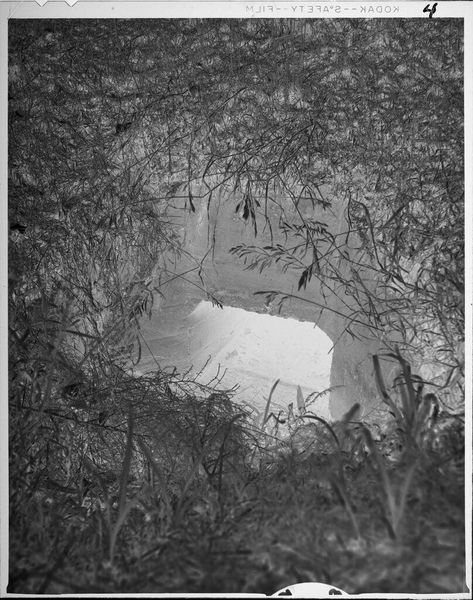
The Roman antiquities, t. 3, Plate VII. View of the ancient Appian Way, which passes under the walls of `Ustrine.
0:00
0:00
print, etching, graphite, engraving, architecture
# print
#
etching
#
sculpture
#
textured
#
landscape
#
perspective
#
road
#
geometric
#
line
#
graphite
#
texture
#
history-painting
#
italian-renaissance
#
engraving
#
architecture
Copyright: Public domain
Editor: Here we have an etching by Giovanni Battista Piranesi, titled "View of the Ancient Appian Way." It depicts a section of road paved with massive stones. I’m immediately struck by the sheer labor involved in quarrying and setting these blocks. What's your take? Curator: It’s a compelling image when considered through a materialist lens. Notice the immense scale of the stones and consider the workforce required to move and shape them. It’s not just about artistic skill; it's about exploiting resources and commanding labor. What does the image communicate to you about social power? Editor: Well, it hints at the might of the Roman Empire, their engineering prowess, but also the backs that built it all, right? How does Piranesi portray that tension? Curator: Exactly. Piranesi highlights the tension through detail. The precision of the stonecutting contrasts with the suggestion of decay, visible in the eroded surfaces. Think about the printmaking process itself. What are the materials – paper, ink, metal plate – and the labour that produced them? It’s a form of industrial reproduction, isn’t it? Editor: So the act of creating the print mirrors the industrial aspect of the road's construction? The print makes this monument accessible, and maybe challenges traditional notions of high art by celebrating this everyday roadway through a very mechanical method. Curator: Precisely! And consider who could access these prints. This image is not simply a picturesque view; it's a document of a monumental infrastructure, revealing much about Roman society through its materials and production. Editor: That's given me a totally fresh perspective on what I thought was simply an architectural rendering. I'm going to think more critically about production and materiality now. Curator: Excellent. Looking beyond the aesthetic to consider the means of production can profoundly deepen our understanding.
Comments
No comments
Be the first to comment and join the conversation on the ultimate creative platform.
